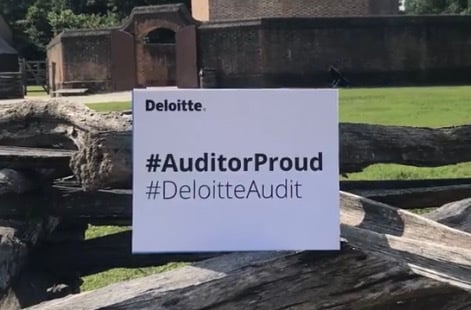So far among the top seven firms in the U.S., the PCAOB has released 2017 inspections reports for five: one was god-awful (RSM US), one was horrible (KPMG), one was pretty, dare I say, good (Deloitte), and one was dynamic (Grant Thornton). PwC’s inspection report would probably fall on the “good” side (if you consider one-fourth of its audits inspected being screwed up “good”), yet it was pretty unremarkable, too.
Of the 55 audits conducted by PwC in 2016 that the PCAOB inspected, 13 were found to have problems “of such significance that it appeared to the inspection team that the firm, at the time it issued its audit report, had not obtained sufficient appropriate audit evidence to support its opinion,” the report stated.
Now, you could make a case for PwC’s 2017 inspection report being good because the 24% audit deficiency rate is below the firm’s historical average deficiency rate of 29%. Of the Big 4, PwC is tied with Deloitte for the lowest average deficiency rate from 2009 to 2016. Fist bumps all around.
But on the other hand, the firm’s inspection report is also underwhelming because P. Dubs’ audit deficiency rate actually got worse year over year. In fact, the firm’s deficiency rate decreased each year from a high of 41.3% in 2011 to a low of 20% in 2016 before climbing to 24% in 2017.
In addition, 49 of the 55 engagements inspected involved a financial statement audit and the audit of internal control, according to Compliance Week. Of the 13 problem audits, 11 contained internal control audit deficiencies, which means 22% of PwC’s internal control engagements inspected contained errors, up from 18% in 2016.
The three areas that caused PwC auditors the most confusion, according to the inspection report, were:
- Failure to identify and test any controls that addressed the risks related to a particular account or assertion. (Seven audits)
- Failure to sufficiently test the design and/or operating effectiveness of controls that the firm selected for testing. (Six audits)
- Failure to sufficiently evaluate significant assumptions or data that the issuer used in developing an estimate. (Six audits)
But don’t worry, guys, PwC is on it, Chairman Tim Ryan and Assurance Leader Maria Moats said in their response to the PCAOB report:
Bringing value to the capital markets by consistently performing high-quality audits remains our top priority, including addressing the matters raised in the Report in a thorough and thoughtful way. We have evaluated each of the observations set forth in Part I – Inspection Procedures and Certain Observations of the Report and have taken appropriate actions under both PCAOB standards and our policies. Our evaluation included those steps we considered necessary to comply with AS 2901, Consideration of Omitted Procedures After the Report Date, and where applicable, AS 2905, Subsequent Discovery of Facts Existing at the Date of the Auditor’s Report and AS No. 2201, An Audit of Internal Control Over Financial Reporting That Is Integrated with An Audit of Financial Statements.
We’re still awaiting EY’s and BDO USA’s 2017 inspection reports to be released, but until then, here’s the audit deficiency rate scorecard as of today (lowest to highest):
- Grant Thornton (18%)
- Deloitte (20%)
- PwC (24%)
- KPMG (50%)
- RSM US (73%)


